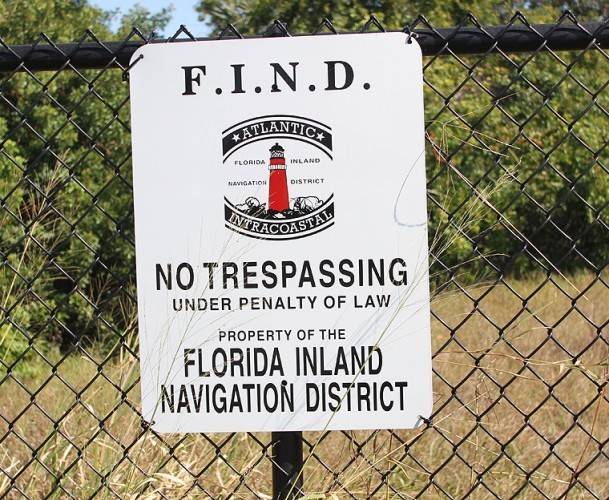
SEBASTIAN — Sebastian residents are about to finally learn whether muck dredged from the Indian River Lagoon between the Wabasso Bridge and the Brevard county line will be stored at the controversial containment area at Duck Point, just east of Whispering Palms mobile home community.
A year and a half after people living near the 70-acre pit raised an uproar about the Florida Inland Navigation District’s plan to dump 140,000 cubic yards of muck adjacent to their houses and condominiums without testing it for poisonous substances, the testing is finally complete.
“The sediment samples were taken in September and we will have the final results this week,” says David Roach, FIND’s executive director.
FIND hired Delray Beach-based American Vibracore Services at a cost of $76,000 to take 14 sediment samples from three shoaling sections of the Intracoastal Waterway where dredging is planned.
“They took core samples by vibrating and pounding in a tube that went down 15 feet below mean low water, encompassing the full depth we will dredge,” says Roach. “A state-certified lab tested the material for grain size, organic content, pesticides, PCBs (polychlorinated biphenyls), petroleum products, and metals like mercury, arsenic, lead and zinc.”
If the tests come back clean, dredging will proceed and dredged material will be stored in the $8 million containment area built by the Army Corps of Engineers on the west shore of the lagoon between 99th St. and 105th Place.
“The Florida Department of Environmental Protection has a list of soil contamination threshold limits for residential areas for all of the things we are testing for,” says Roach. “We will compare the test results to those levels to determine how we ultimately dispose of the material.”
If the muck is contaminated, dredging may still proceed but the dredged material likely will not be dumped in Sebastian.
“When it is really bad, you put it in barrels and take it to Alabama,” Roach said.
FIND, a special taxing district, was established in 1927 by the Florida Legislature to create and maintain a navigable waterway along Florida’s Atlantic coast.
Staffers began planning the dredging project and storage pit a full 15 years ago in 1997. At that time, the district did some sediment testing, which found no contamination, and held public meetings to inform residents and hear feedback about the plan.
Four years went by and in 2001, FIND bought a 180-acre property known as Vickers Grove as a containment site.
After another six years, it began the process of seeking a permit to build the dredge material storage area in 2007.
No additional contamination testing was done and no meetings were held to update the public.
When the permit was finally granted and construction on the pit began in early 2011, it caught residents by surprise.
Many of them had moved to the area in the years since the public meetings in the 1990s, when the population of Sebastian was about half the 22,000 people who live here today.
Discovering that their new neighbor would be a dredge spoil pit stirred up fear and resentment.
Hostility to the project increased when groups realized FIND had not tested the muck it planned to dredge for toxic substances in 14 years.
When project opponents packed an Indian River Board of County Commissioners meeting in June 2011, county officials, State Rep. Debbie Mayfield and other area politicians added their voices to the chorus calling for new tests.
In September 2011, FIND agreed to retest the muck and Roach said testing would likely be underway within 60 days.
But FIND’s first testing plan did not satisfy project opponents, who said the depth and frequency of samples was not adequate to protect public safety.
“Getting the testing done was a longer, more drawn-out process than we anticipated,” Roach says. “We went back and forth with the concerned citizens and the navigation district board of commissioners and came up with three different sampling plans before we got one approved.”
“If there is something in the muck, we will work with the DEP to figure out how to handle it correctly, but we don’t think there will be any problem,” Roach said.
Roach’s confidence is derived from statewide tests of marine sediments performed by DEP, where contaminants were found only in the Miami River and Tampa Bay near the harbor.
“Sediment in the Indian River Lagoon has always been clean,” he said.
If Roach is right, FIND will proceed with getting a permit to do the planned dredging. The containment pit is already complete, but it could take another year or two for any muck to be moved.
“We would go through engineering and design this year along with a bid process and be dredging by late 2013 or early 2014,” Roach says.



